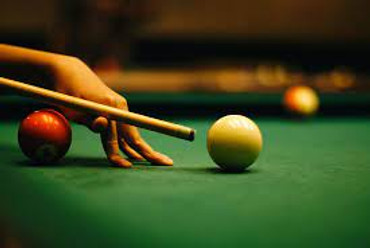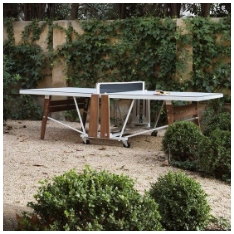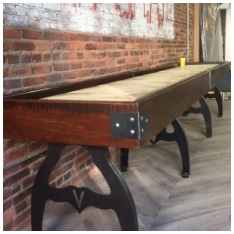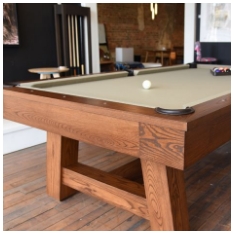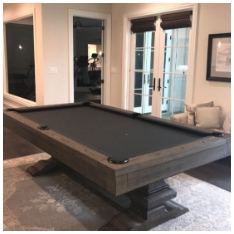Playing pool is as much about skill as it is about having the right equipment. While a well-maintained table and balls matter, the cue you choose can make the biggest difference in your game. A pool cue isn’t just a stick it’s an extension of your playing style. Choosing the right one can help you improve accuracy, control, and consistency.
If you are wondering how to choose a pool cue: 10 steps, this detailed guide will walk you through everything from cue length and weight to tip size and balance.
Step 1: Understand the Standard Cue Length
The first step in selecting a cue is to consider its length. Most adult players are comfortable with a standard cue length of 57 to 59 inches.
- Average adult players: 58 inches is the go-to size.
- Shorter players or children: 48-52 inches may be more comfortable.
- Taller players (over 6’4”): Some prefer 61-inch cues for better reach.
Choosing the right length ensures that your stroke remains natural and that you do not struggle with awkward movements.
Step 2: Choose the Right Cue Weight
Cue weight is often overlooked, but it has a direct impact on your shot. Pool cues usually range from 17 to 21 ounces.
- Lighter cues (17-18 oz): Allow for more cue ball control and spin.
- Heavier cues (20-21 oz): Provide more power but less finesse.
- Balanced option (19 oz): A popular middle ground for most players.
Think about whether you prefer control or power, as your cue weight should match your playing style.
Step 3: Pay Attention to the Cue Tip Size
The cue tip makes direct contact with the cue ball, making it one of the most important factors in your decision. Tip diameters usually range between 11mm and 14mm.
- Smaller tips (11-12 mm): Better for spin and finesse shots.
- Larger tips (13-14 mm): Provide more stability and forgiveness.
Beginners often benefit from larger tips, while advanced players may choose smaller tips for added precision.
Step 4: Understand Cue Tip Hardness
Besides size, cue tips vary in hardness.
- Soft tips: Hold chalk well and allow for more spin but wear down faster.
- Medium tips: A balance of durability and spin, great for most players.
- Hard tips: Last longer and deliver powerful shots but provide less spin control.
A medium tip is the safest starting choice if you are still figuring out your style.
Step 5: Evaluate Cue Shaft Material and Taper
Cue shafts are generally made of maple wood, though advanced cues may use carbon fiber for durability and consistency.
- Pro taper: Stays the same thickness for a longer section of the shaft, giving players more consistent strokes.
- European taper: Gradually increases in thickness and feels stiffer.
Maple is reliable for most players, but if you want less warping and a smoother stroke, carbon fiber cues are worth considering.

Step 6: Consider Cue Joint Types
The cue joint is where the shaft connects to the butt. Joints affect how solid the cue feels when striking.
- Wood-to-wood joints: Offer a softer, more natural feel.
- Metal joints: Provide a stronger hit and are more durable.
- Quick-release joints: Convenient for players who travel with their cues.
While beginners may not notice much difference, intermediate and advanced players often develop a preference.
Step 7: Select the Right Cue Balance Point
The balance point of a cue determines how it feels during play. Typically, the balance point is about 18 to 19 inches from the butt end.
- Forward-balanced cues: Heavier toward the shaft, good for players who prefer powerful strokes.
- Rear-balanced cues: Heavier toward the butt, ideal for players who want more control and finesse.
Finding your balance preference may take some trial and error, but it’s worth experimenting with.
Step 8: Look at Wrap and Grip Options
The wrap affects how comfortable the cue feels in your hands and how much control you maintain during shots.
- Irish linen wraps: Smooth and durable, preferred by many advanced players.
- Leather wraps: Offer a softer feel and good grip.
- No wrap (wood finish): Sleek look but may get slippery if your hands sweat.
Choose a grip that complements your comfort level and playing environment.
Step 9: Decide Between One-Piece and Two-Piece Cues
Cues come in both one-piece and two-piece options.
- One-piece cues: Often found in pool halls, durable but less convenient for travel.
- Two-piece cues: Easier to transport, more customizable, and preferred by serious players.
If you plan to carry your cue to tournaments or pool halls, a two-piece cue is the smarter choice.
Step 10: Match the Cue to Your Playing Style and Budget
Finally, consider your skill level, goals, and budget.
- Beginners: A standard maple cue with a medium tip, 19 oz weight, and two-piece design is ideal.
- Intermediate players: May invest in cues with higher-quality joints, wraps, and customizations.
- Advanced players: Often choose specialty cues like carbon fiber shafts, low-deflection cues, or custom designs.
Pool cues range widely in price—from $50 beginner cues to $500+ advanced models. The right cue is not necessarily the most expensive, but the one that feels natural and consistent for your game.
Additional Tips for Choosing the Right Pool Cue
- Test before buying: If possible, try different cues at a local pool hall or shop.
- Check straightness: Roll the cue on a flat surface to ensure it isn’t warped.
- Invest in maintenance: Keep your cue tip shaped, replace it when worn, and store your cue properly to extend its lifespan.
Conclusion
Knowing how to choose a pool cue: 10 steps gives you the confidence to select a cue that complements your playing style. From length and weight to tip size and grip, every detail influences how well you perform at the table. A carefully chosen cue isn’t just equipment it’s a tool that helps you improve control, accuracy, and consistency.
Whether you’re just starting or looking to upgrade, take your time to test different options, learn what feels right, and invest in a cue that enhances your game for years to come.
